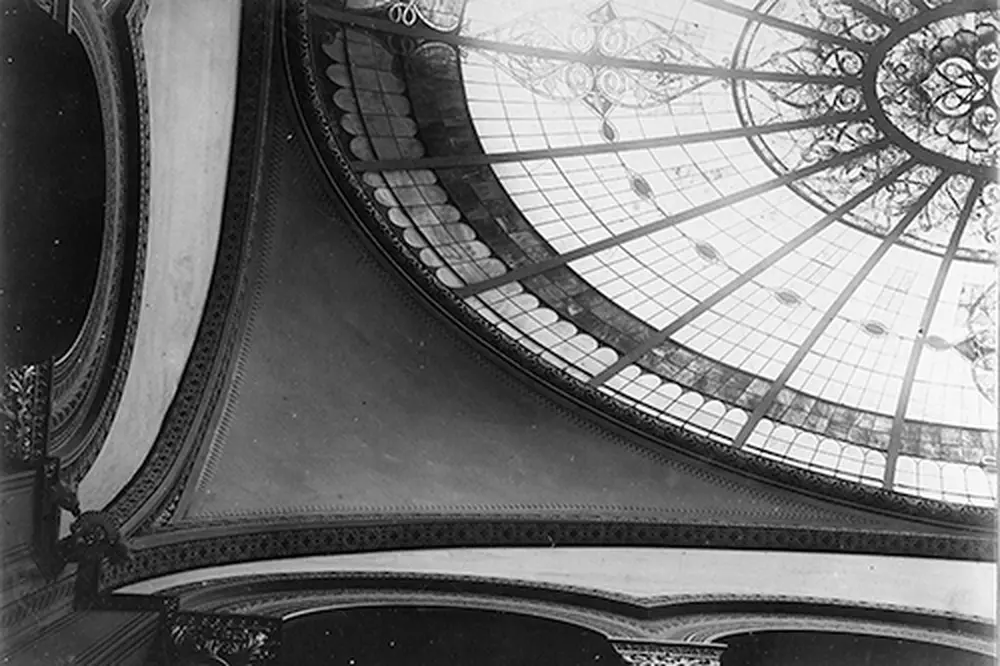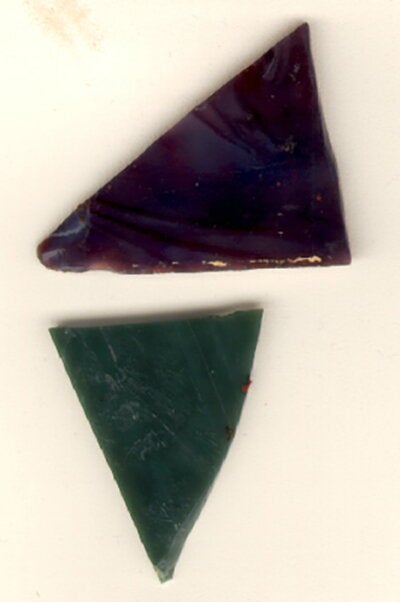
It’s difficult to picture while standing in the lobby of the Altgeld library today.
However, generations ago a spectacular display of color – greens, ambers, purples, and cobalt blues – crowned one of the most special spaces on campus.
In 1896, a beautiful glass dome was installed at the top of the lobby of the Altgeld library and provided impressive natural light. Then with little fanfare or documentation, the glass dome was removed in 1942 due to ongoing maintenance concerns, explained Karla Smalley, an architect with Bailey Edward.
“From what we can tell from our research is that in 1941 (university leadership) asked for it to be removed because of safety reasons,” Smalley said, adding that the cost for removal was around $2,000. “They didn’t elaborate on it. I can’t find that it was falling out, they just asked for it to be removed. Then in 1942 we have the drawings that show the removal process and how they reconfigured that area, but I can’t find anything that tells me what they did with the glass. We have a lot of documentation of them getting ready to do it, but nothing on what happened to the glass after.
The glass was then replaced with the plaster dome that exists today.
Now, the $192 million Altgeld and Illini Hall Project has presented an opportunity to recreate this significant centerpiece to one of campus’s most beloved buildings. Few photos were taken during the dome’s 46 years, and certainly none in color, which has left an ongoing color and design mystery. Architects have been charged with considering the scrolling, life-like leaf design featuring the original colors and textures with hopes that the dome will be accurately recreated and along with it, a piece of the building’s history. However, scouring university archives has brought to light little about the dome’s details.
The architecture team is using several methods to consider the colors and texture for the glass, Smalley explained. For example, the team is comparing the few Altgeld dome images with black and white photos of existing stained glass that was installed during the same era within the region. By comparing the tones in black and white, the team hopes to come closer to naming the colors within the original design.

Altgeld Hall was first dedicated as Library Hall in 1897. Several years later, Newton Alonzo Wells installed murals and pendentives in the lunettes of the arches of the rotunda surrounding the glass dome. The four murals were dedicated to the university’s four colleges at the time – agriculture, engineering, literature and arts, and science. Architects believe the tones within these murals likely reflect the colors from the original glass, Smalley said.
“Our thinking is that Wells likely would have pulled colors from that dome to incorporate into his murals, so we have been looking at his work to start to talk about what colors are actually in the dome – purples, reds, blues,” Smalley said. This has proven true with pieces of green and purple glass that have been recovered from within the insulation of the building.
The team has also worked with local glass artist Rich Taylor at Glass FX to create sample panels of the dome design. Taylor owns samples of glass from Kokomo Glass that was in business in Indiana at the time the dome was installed, Smalley explained.
“Some of that glass has been discontinued because of some of the metals they used to make the glass,” she said. “Especially the greens, which likely contained arsenic. So we won’t get the exact same colors of green, but they’ve changed the way they make the glass and have gotten close to the colors that were made 120 years ago.”
Bidding for the first phase of renovations to Altgeld Hall is slated to begin in June 2021. Renovation work for the first phase is scheduled to begin in October 2021 and conclude in December 2022.
“It’s been work,” Smalley said about the ongoing process. “We have started assigning colors to all of those elements. It is a beautiful building, but it will be quite beautiful when it is done.
By Kayleigh Rahn | LAS News